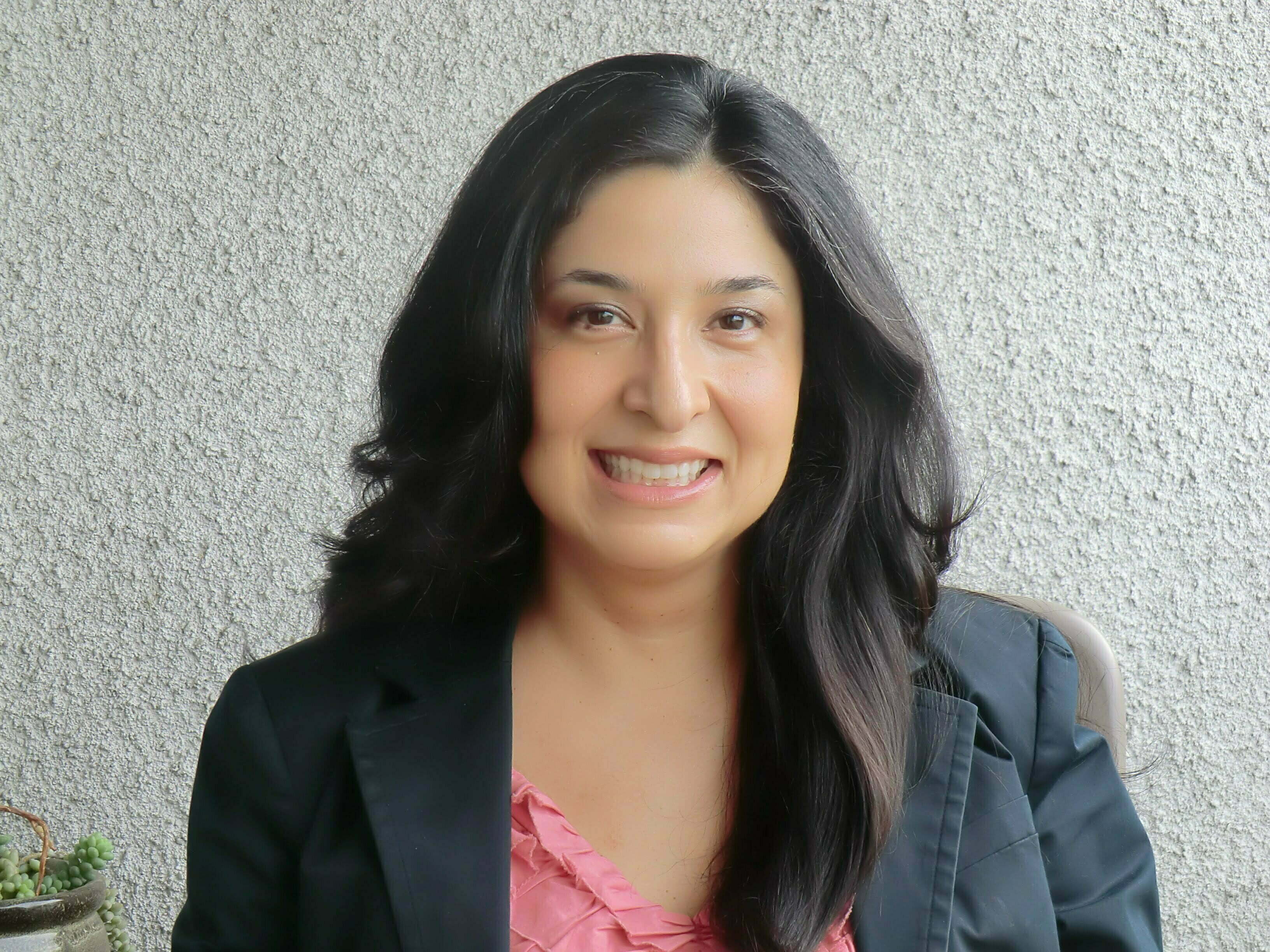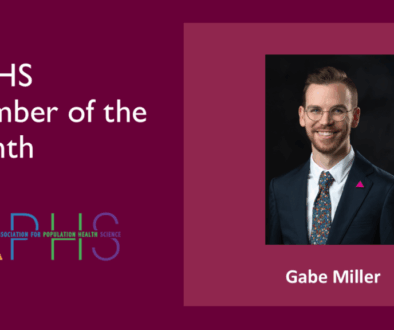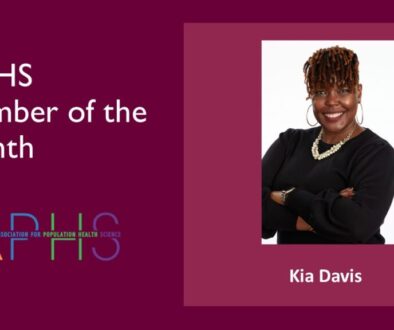Member Insights: Alexis Santos
Selena Ortiz, Sara Curran, Muntasir Masum, Sung ParkDr. Alexis Santos is an Assistant Professor of Human Development and Family Studies at the Pennsylvania State University. His areas of expertise are individual development (adult and aging) and developmental research methodology. His primary research interest lies in the study of social disparities in stress, health, and mortality. You can follow him on Twitter: @AppDemography
Please share your thoughts on how differential privacy affects the accuracy of 2020 U.S. Census data.
There are many reasons that can affect the accuracy of the 2020 U.S. Census data, but differential privacy affects the data releases. If you think about the decennial census as a picture, differential privacy would be adding blurry spots to it so that those on it are not identifiable. This is not new. Traditionally, the U.S. Census Bureau has applied different methods to protect people’s privacy. However, the new method makes the picture blurrier in places where we do not want it to be blurry. It provides an unfocused snapshot of groups who are considered to be at risk of reidentification. Think about rural areas, if there is a small but growing Hispanic population, because the group is so small the algorithm will inject noise in those areas to reduce the risk of disclosure. What we are seeing is a system that produces counts and tabulations that deviate from the previous system at alarming rates. As of October 2020, we are waiting for a demonstration product that incorporates the final differential privacy algorithm to study how the data look in comparison to the traditional method.
Does differential privacy affect how we study and understand different race and ethnic populations in diverse geographic settings?
It does. Let me give you three examples. Think about how we measure population change in our basic demographic techniques course. The example I mentioned before, we compare the population at two points in time. The noise injected by the algorithm alters the race/ethnic composition causing different levels of population growth. I have a piece with Dr. Tom Mueller (here) where we find that this effect is bigger for rural and non-white populations. From now on, we need to be careful with any measure of growth we produce using the public data.
Second, most of my work has focused on the use of census data as denominators for health rates. In two of my publications, I demonstrate how the change in denominators affects mortality rates. In the first one, published in PNAS, we find that areas with smaller populations and racial/ethnic minority counts were highly affected by the implementation of the initial differential privacy algorithm (here). The second one, is a data visualization published in Socius where I demonstrate the implications for infant mortality rates with an emphasis in rural/urban populations. The levels of error for racial/ethnic minorities across the urban/rural continuum would exhibit comparable if not higher levels of error.
So far, we have discussed about population growth and the use of census data as denominators. My last example deals with how census data is crucial for rapid response and assessments. Think back to the onset of the COVID-19 pandemic. People were looking for answers and one of the main sources of information was the U.S. Census Bureau. If you think about the work by Dr. Jennifer Dowd and colleagues “Demographic science aids in understanding the spread and fatality rates of COVID-19” age/sex composition are crucial for understanding the pandemic. During a conversation with Dr. Matt Hauer, we wondered how the implementation of the proposed system would affect of understanding of an event comparable in incidence and fatality to the pandemic. The resulting paper was published in Socius and we concluded the changes produced by the implementation the privacy algorithm would hinder our understanding any event by distorting rates. The distortion is larger for population groups with fewer than 1,000 persons. How big is this? This is 40% of all county-level age-sex counts and 60% of race groupings. So not a small impact.
Overall, I still hold concerns about this, but the U.S. Census Bureau has decided to move forward with the implementation with an enormous “privacy budget”, which injects noise but holds no protection for the data. Some are calling this a victory; I am not as optimistic on this matter.
Please share how your work (if any) relates to the issues and concerns that have emerged from the COVID-19 pandemic.
There is an article by Dr. Theresa Andrasfay and Dr. Noreen Goldman that estimates how life expectancy has reduced due to the COVID-19 pandemic. That paper prompted me to start studying how the COVID-19 pandemic compared to Hurricane María in Puerto Rico. With two collaborators we are comparing numerous mortality related measures to understand the toll of the pandemic beyond death counts. With 2020 data, we found that the pandemic has a comparable effect than Hurricane María; given that the pandemic continues in 2021, my hypothesis is that it will be a death toll and human cost will surpass any other event experienced in Puerto Rico in recent history.
Current population health efforts are focused on vaccination efforts. In the future, what population health investments and policies are necessary to best prepare for and prevent future public health catastrophes?
Given my work in post-disaster demography, I believe we need more investments in mental health services. Many of the issues I observed after Hurricane Maria and the Earthquakes were associated with post-disaster stress. This was recently discussed in the NICHD Family Symposium, organized by Penn State, where in the aftermath of the events there is an influx of funding for healthcare, but this allocation stops after one or two years, we now understand that it takes more time for families to truly recover from being exposed to disasters.
Tell us about your professional journey and how you ended up studying population health?
I was trained to be a population health scientist since early ages. I grew up surrounded by my extended family under the care of my grandparents Juana and Pedro, and my mother Lisette. My grandmother would mention words like cholesterol, triglycerides and blood pressure on a monthly basis as she monitored her health to keep her diabetes under control. I remember running to the dictionary to try to find those words. Most of them were not there so Abuela Juana took some time to explain them.
I grew up in Puerto Rico and I went to college to become an accountant. I can still remember my first day at the University of Puerto Rico at Cayey; I truly enjoyed my time there. However, one thing that was curious for me was how I was not interested in balance sheets, active or passive income, or in developing a business plan. I was more interested in people and how they lived. I transferred to the Economics program at the Social Sciences Faculty. Our program was focused on society and economic development, thus we studied historical processes that shaped Puerto Rico’s economic reality. I felt at home! Nevertheless, I also knew I wanted to work with data.
There is a paper by Dr. Uddin and Dr. De los Reyes about “casual mentoring” and it summarizes what happened to me. During my college years, I was also a member of the Student Government and met Dr. José N. Caraballo who was the Dean of Academic Affairs. He mentioned I would be a good student for his Applied Statistics courses. I took all those courses, and during some conversations, he mentioned Demography as a potential track that I should explore. I was admitted to a Masters Program in Demography but was unable to attend due to health reasons. After a couple of weeks, I ended up enrolling in the Masters in Economics but asked my advisor Prof. Argeo Quiñones to allow me to follow a more historical approach to study health economics in Puerto Rico. He was supportive of the idea of doing an economic history thesis in the evolution of Puerto Rico’s healthcare system. When I felt things were moving I decided to start looking for a PhD and the idea of Demography came back.
After many hours of navigating the web, I identified three programs that fit what I wanted to do, one of which was the University of Texas at San Antonio. I still remember receiving the admission e-mail, I printed it and ran towards a friend and asked her to confirm I had read it correctly.
I left Puerto Rico moved to San Antonio, Texas to embark on my Demographic Adventure. Officially, I started my journey in population health in Dr. Corey Sparks’ statistic courses and by having conversations with fellow students like Dr. Jeffrey T. Howard (UTSA) and Dr. Brian Munkombwe (CDC). During PAA 2014, Jeff took me out for lunch and I think it is a defining moment in my career, another casual mentoring moment. He sat down with me and we discussed our areas of research. It was thanks to this pivotal moment I started taking things seriously. It was thanks to this conversation I trusted Jeff to help me produce my Hurricane Maria death toll estimates. He has been a source of support and encouragement for the last 7 years.
What is the general focus of your current research?
My current research focuses on understanding health disparities leveraging biomarkers and self-reported assessments, particularly identifying how traditional measurements may be hiding complex patterns of population health. My secondary area of research is to measure the consequences of changes in U.S. Census data in our understanding of health disparities. A third area I have done quite a bit of work is post-disaster mortality and the development of counterfactual models.
Can you summarize for us something you’ve been working on recently?
Sure thing! I am a trainee of a NIA Diversity Supplement under the Interdisciplinary network on Rural Population Health and Aging. My mentors are Dr. Leif Jensen, Dr. Shannon Monnat and Dr. Marty Slikinski. We are leveraging the public NHANES III to conduct preliminary analyses on rural/urban health disparities leveraging biomarkers of physiological dysregulation. The work conducted will allow us to start exploring these disparities with a goal of launching a study that assesses the mechanisms that are creating and shaping rural/urban disparities in physiological dysregulation (i.e. allostatic load) in the United States.
How is interdisciplinary work necessary for the topics you study?
My work would not be possible without an interdisciplinary focus. I will give you three examples. First, part of my work deals with exploring whether answering a survey in Spanish is affecting how Spanish-speaking Latinos report their health status. Therefore, it is not only about health but also about the definition of a word like “regular”. For this, I borrow knowledge from psychology, language sciences, and ethnographic work that gives me better insights into what is being measured in surveys that are administered in two languages. The second example is also related to how people report their health, but more about whether health ratings are similarly associated with biological risk profiles by race/ethnicity. I combine knowledge from Developmental Psychology, Biobehavioral/Biodemographic perspectives, population health with statistical methods to test my hypothesis. Most recently, I have started to study the Demographic Transition in Puerto Rico. On this, I have had to not only rely on demographic methods but also read about history and political sciences to understand what was happening in key moments in which we observe drops or increases in fertility, migration, mortality or divorce/marriage indicators. As you can see, most of my academic adventures are aided by an interdisciplinary perspective.
Why did you decide to become a member of IAPHS, and how does IAPHS help you advance your work?
I became a member when the IAPHS conference was held at Penn State. I was working in a non-tenure track position and wanted to stay in touch with the research world. During that conference, I was able to reconnect with scholars like Dr. Bob Hummer about what I was doing, and he was excited to hear I was still working in my projects. I have certainly benefited from the conference in many forms. It gave me renewed energies to stay active in the research world despite it not being required for my position. If not for that conference, and the support I got from so many colleagues here at Penn State, I would not have been able to do the jump from a non-tenure track to my current position. I kept watching the growth of the organization and sometime in the last semester, I rejoined to be able to serve as mentor in the Mentoring Program. Despite being still on the tenure track, I think I am in a position where I can help and advice a rising scholar. Mentoring is one of the best parts of my job. I have advanced my work in many ways. Aside from the fantastic interactions I have with members, I have also had the opportunity to engage in meaningful discussions through the Sick Individuals/Sick Populations podcast back in September 2021 (here). I assure you, the investment has paid itself.
Favorite population health relevant academic/news/etc. article(s)
I recall this was a question we were asked in Research Methods class years ago by Dr. Rene Zenteno at UTSA. I find it difficult to select a favorite piece because it depends on what type of research I am reading. If you ask me about demographic methods, I would have to say the work by the team led by Dr. Ashton Verdery and Dr. Rachel Margolis. If I am reading on spatial methods then work by Dr. Stephen Matthews and Dr. Tse-Chuan Yang. Lately, I have started to move my research agenda towards my work that focuses on Latinos in the United States. For that, I read a lot of the work by Dr. Edna Viruell-Fuentes (RIP) and Dr. Alicia Riley.
There are certain bodies of work by specific authors I like to read. Among them the work of Dr. Anna Zajacova, Dr. David Hayes-Bautista, Dr. Robert Hummer, Dr. Rick Rogers and Dr. Nancy Krieger are work I like to read.
I also enjoy reading pieces published through The Conversation.
Favorite movie, band, non-fiction, book, etc.
My favorite movies are “El Secreto de Sus Ojos” and “Palmeras en la Nieve”. One is a masterpiece of Argentinian Cinema and the other one links family histories from Spain to Equatorial Guinea and back to Spain. I also enjoy watching movies from the Marvel Cinematic Universe and The Godfather. The Harry Potter and Lord of the Rings movies are certainly somewhere in the top of the list. In terms of music, it depends on the day and how I am feeling. I like to listen to Air Supply, Chicago, but mostly I like salsa bands like “El Gran Combo” (Puerto Rico), Grupo Niche (Colombia), and enjoy listening to “boleros”. Regarding books, Harry Potter, Lord of the Rings, and the Percy Jackson series are some of the one I’ve read multiple times. Lately I have been buying books that have to deal with history of music; I have even considered doing a Masters in History.
Hobbies?
I have to say hobbies is something I have rescued as I try to attain work-life balance. I like to listen to music and have been buying vinyl records for the better part of the last year. Most of them are classics in either Salsa (i.e. Ruben Blades, Bobby Valentín) or Boleros (i.e. Bobby Capo). So a nice hobby is listening to these vinyl records at home with and simply thinking about the songs. I used to spend almost every hour in my office so this is a renewed aspect of my life that I want to continue nurturing and enjoying. I am also starting to build a collection of trading cards either baseball, 1990s NBA, or Pokémon. As of April of this year, I am the proud owner of a Charizard, a Blastoise and a Venusaur. Aside from that, just having coffee with friends, calling a friend I have not spoken to in a long time, or walking and talking are a good way in which I enjoy to spend my free time. During the lockdown time I had a lot of virtual dinners which we called “Fancy Friday” cause we started suiting up on Fridays. By the end, it was more casual. One thing I have enjoyed is online gaming. During the lockdown I occasionally played Age of Empires with my friend Ramón who lives and works in Puerto Rico.








All comments will be reviewed and posted if substantive and of general interest to IAPHS readers.